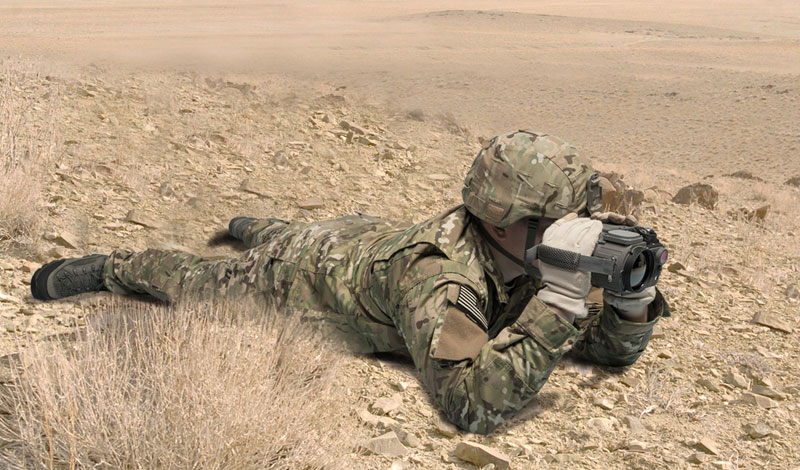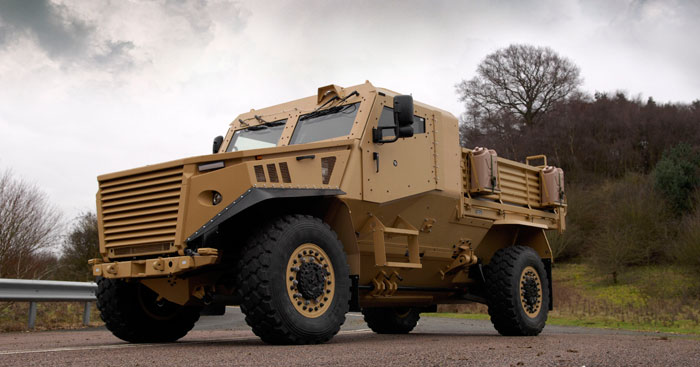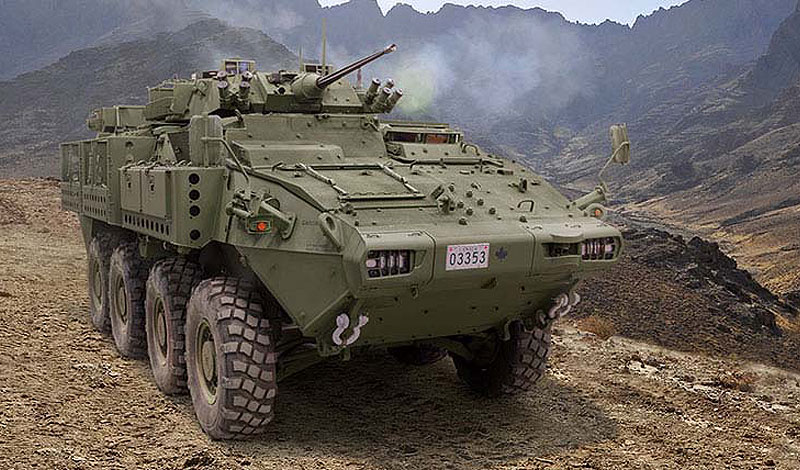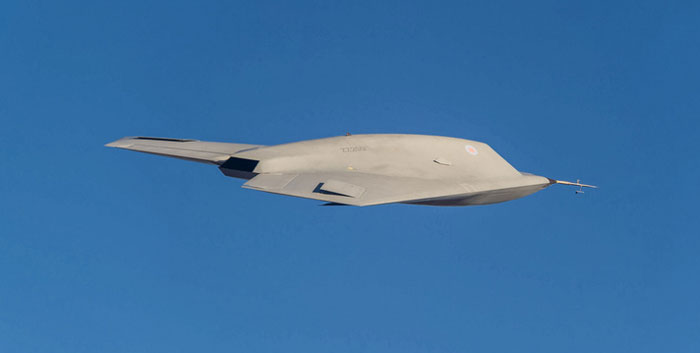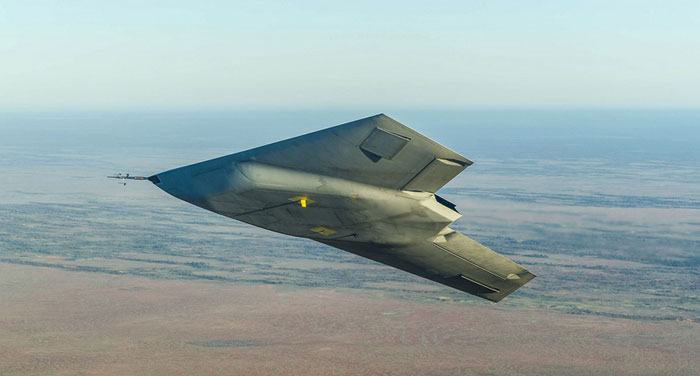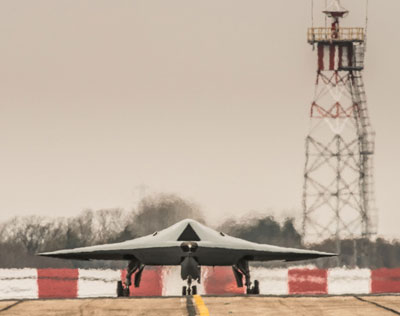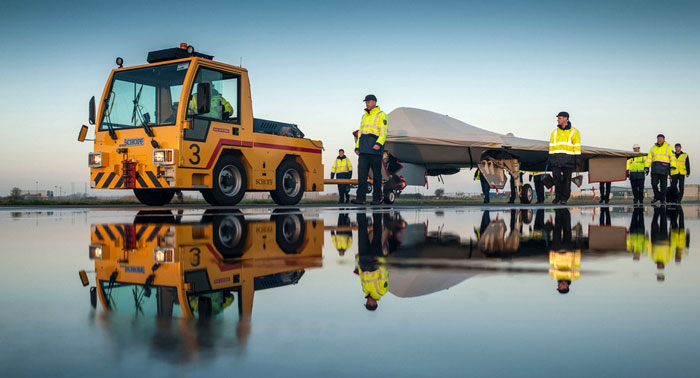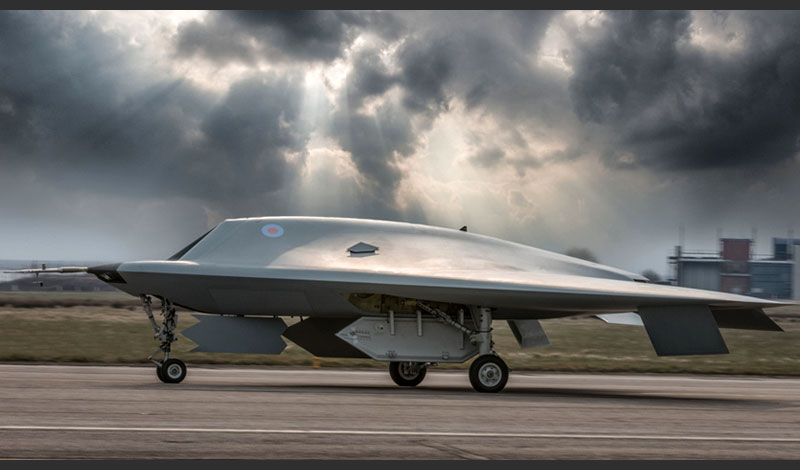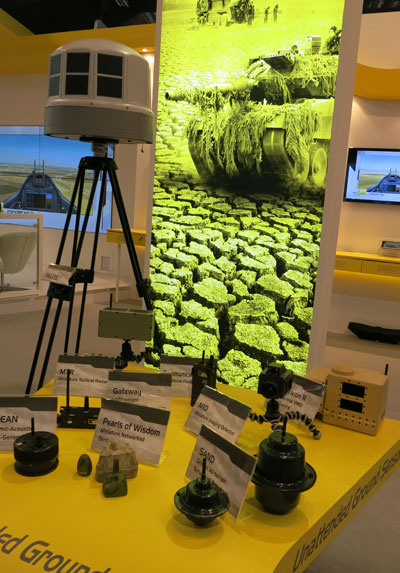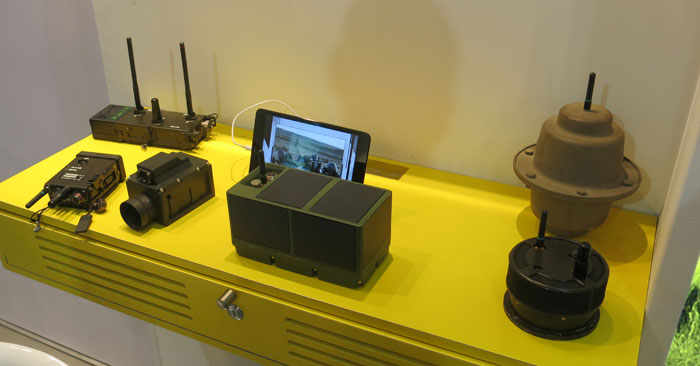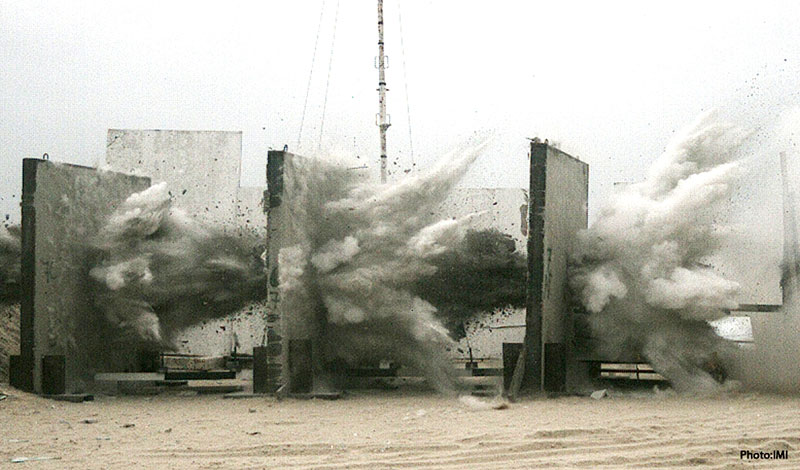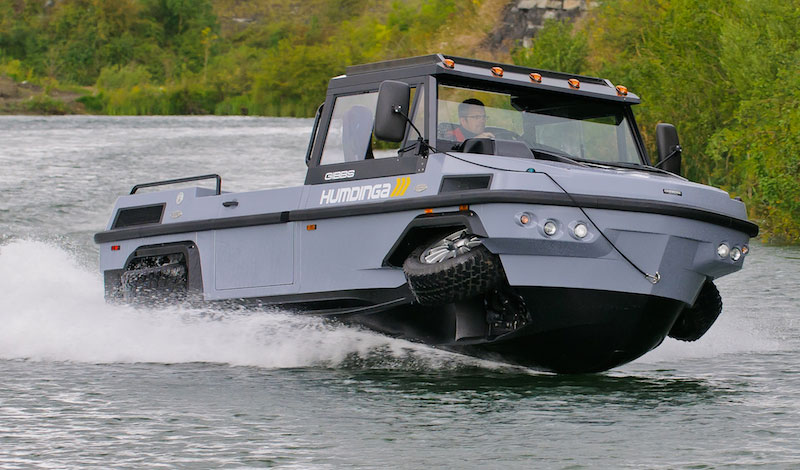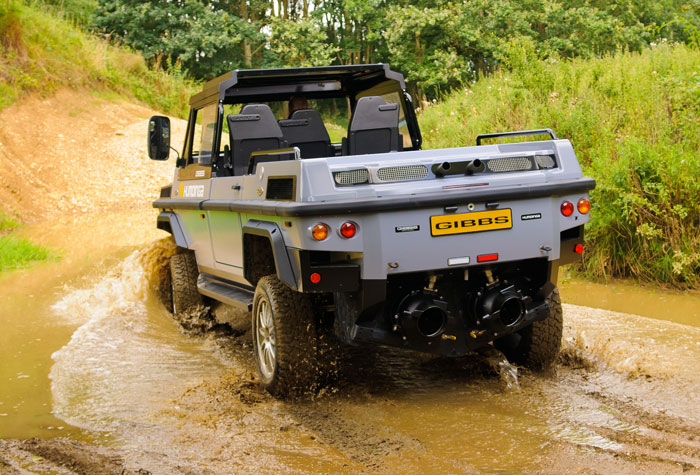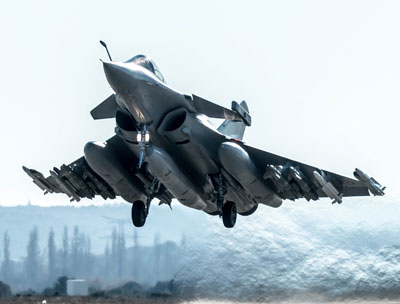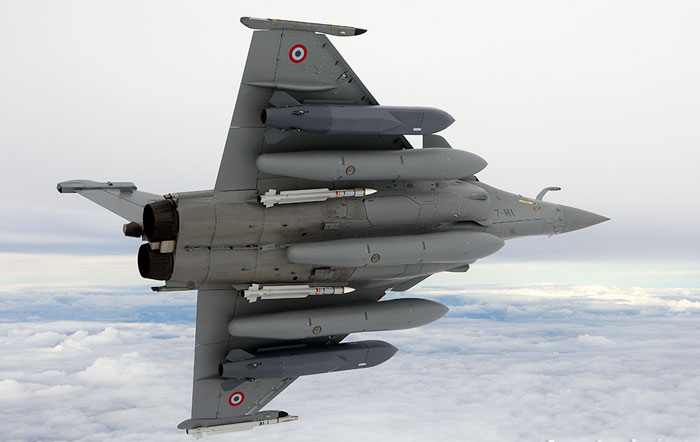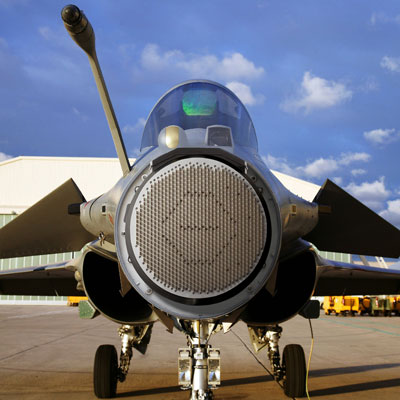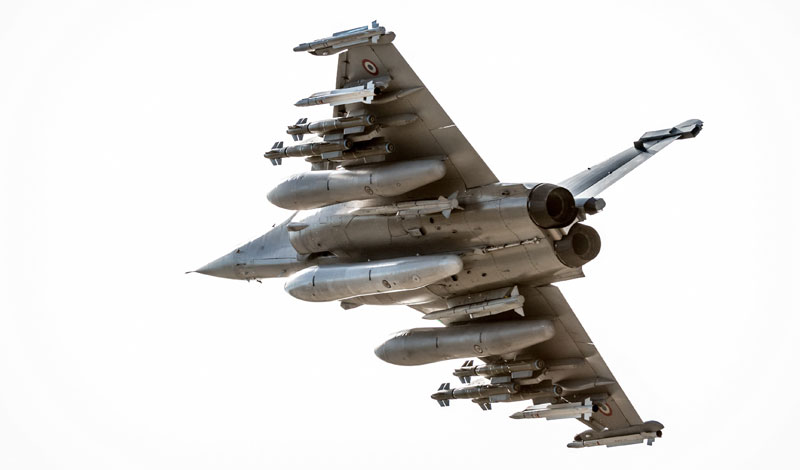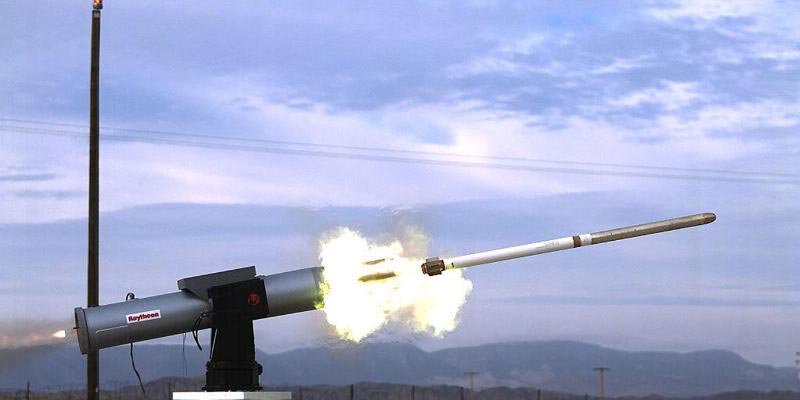
In
recent years Prowler detachments were regularly operating from Bagram
in Afghanistan, tasked primarily in providing electronic support for
ground operations, assisting ground forces in Afghanistan and Iraq with
counter IED jamming, signals intelligence and selective jamming. Photo:
US Air Force Capt. Raymond Geoffroy
In recent years Prowler detachments were regularly operating from Bagram in Afghanistan, tasked primarily in providing electronic support for ground operations, assisting ground forces in Afghanistan and Iraq with counter IED jamming, signals intelligence and selective jamming. Supporting traditional marine corps missions, such as amphibious operations, and other high intensity warfare operations require different techniques, tactics and procedures the units currently deployed to Japan can practice. Such activities are regularly performed in exercises they deploy to in Korea, Japan and other parts of the Pacific theatre.
The Prowlers who were previously deployed to Afghanistan have been moved to Al Udeid and are currently being supported by more than 200 Marines from Marine Corps Air Station Cherry Point, N.C.The EA-6B Prowler is a four-seat, twin-engine tactical electronic attack aircraft capable of attacking and jamming enemy radio, communications and radar operations. In service for 37 years the Grumman EA-6B Prowler is one of the Marine Corps’ oldest combat aircraft serving today, yet it carries out one of the most challenging and sophisticated missions – electronic attack. “Electronic warfare is always changing by its nature,” Whitten said.

The
Prowlers who were previously deployed to Afghanistan have been moved to
AUAB and are currently being supported by more than 200 Marines from
Marine Corps Air Station Cherry Point, N.C. (U.S. Air Force photo by
Senior Airman Jared Trimarchi)

Prowlers have been supporting ground troops during Operation Enduring Freedom for more than 10 years. Photo: USMC
The Prowler may be the last Marine aircraft dedicated solely to electronic warfare. The Marine Corps still plans to cycle the Prowler out of service for the stealthy F-35B, which will perform some electronic warfare roles using its powerful radar’s Active Electronic Scanned Array as a directional jammer.
“There is a huge shift in the mindset, going away from kinetic fires and dropping bombs… Sometimes the targets are easier to attack electronically than they are kinetically.” Maj. Bart Macmanus, VMAQ-4 XOThe F-35B will not replace each of the specific function the Prowler has today, it will provide the Marine Air-Ground Task Force (MAGTF) Electronic Warfare with the same capabilities the Prowler has today as a dedicated EA platform. The US Navy is maintaining the dedicated EA role with the EA-18G Growler, which is also geared to fire guided missiles against radars and other targets that can be identified by their electronic signature.uses
One of the new rotations announced this week is the deployment of Marine Tactical Electronic Warfare Squadron 3 (VMAQ-3) “Moondogs” at Al Udeid Air Base (AUAB), Qatar. The squadron arrived here with its EA-6Bs, on February 17, 2014, to support the U.S. Central Command area of responsibility. The Prowlers were previously deployed to Afghanistan have been moved to AUAB and are currently being supported by more than 200 Marines from Marine Corps Air Station Cherry Point, North Carolina.
Though the Prowlers will continue to fly missions to Afghanistan, their main mission is to be ready to support any contingencies or operations which may need electronic attack in the Central Command (CENTCOM) Area Of Responsibility (AOR). ”We are excited to be back at Al Udeid Air Base and look forward to providing electronic attack for U.S. and coalition forces in the area,” said Marine Capt. Keith Hibbert, a Moondog pilot who hails from Ithaca, N.Y. “Prowlers have been supporting ground troops during Operation Enduring Freedom for more than 10 years, and we look forward to continuing that support.”
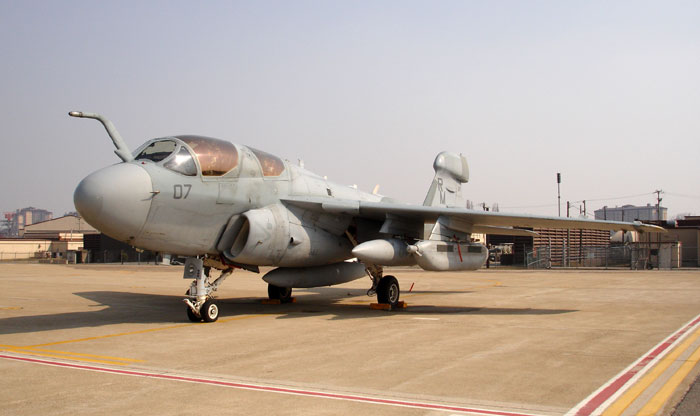
An
EA-6B Prowler aircraft sits ready to conduct training missions at Osan
Air Base, Republic of Korea. Marine Tactical Electronic Warfare Squadron
4 is supporting these deployments out its base at Marine Corps Air
Station Iwakuni, Japan. Photo: USMC by Sgt. Charles McKelvey
Another Marine Corps electronic attack squadron, VMAQ-4 “Seahawks” has deployed to Marine Corps Air Station, (MCAS) Iwakuni, Japan in November, replacing VMAQ-2 “Death Jesters” that were deployed here since August. The squadron was returning to the Pacific Area of Operation after six year of absence, when all electronic attack were directed at the ongoing conflicts in Southwest Asia and the Middle East. VMAQ-1 is based in the SUA and is responsible for operational training of air crews and personnel for the EA-6B fleet.
”There is a generation who has done nothing but (Operation Iraqi Freedom and Operation Enduring Freedom) and they never got the chance to do UDP [Unit Deployment Plan]” said Maj. Bart Macmanus, VMAQ-4 executive officer. “We are trying to do a lot of training,” said Macmanus. “This is the first time Prowlers have been out here in a while, so we are trying to reeducate people, mainly on the capabilities that we bring to the fight.”
”There is a generation who has done nothing but OIF and OEF… With the vacuum that’s been here since the Prowlers have been gone, there’s a lot of resident knowledge that has been lost” Maj. Bart Macmanus, VMAQ-4 XOAlthough now fully employed, the unit’s mission in OEF and OIF varied from what the Marine Corps now expects of its electronic experts. “Being back out here is a totally different mindset and it’s good to get us back out here,” said Macmanus. “It is more dynamic out here and it requires a lot more work to understand your mission set.” Macmanus also said one of the unique opportunities of this UDP is the ability to work with other military branches, such as the U.S. Air Force, stationed at Osan Air Base, Republic of Korea.
“With the vacuum that’s been here since the Prowlers have been gone, there’s a lot of resident knowledge that has been lost,” said Macmanus. “So, we’re just trying to reeducate the masses on what are our capabilities and what we bring out here, not just with the Air Force, but the Marines as well.” Last year the squadron deployed to Iwakuni’s for a short introductory exercise with Marine Corps Hornets and Harriers, plus joint operations with U.S. Air Force and Naval units.
On their current deployment the Seahawks focus again on training. While it’s not putting rounds down range, their presence in the combat arena is certainly felt. “There is a huge shift in the mindset, going away from kinetic fires and dropping bombs,” Macmanus said. “Sometimes the targets are easier to attack electronically than they are kinetically.”
While absent in the Pacific, the Prowler’s reputation became comparable to an old novel with a bookmark. The Seahawks now re-open that book and prepare to write new chapters, almost 45 years in the making.

